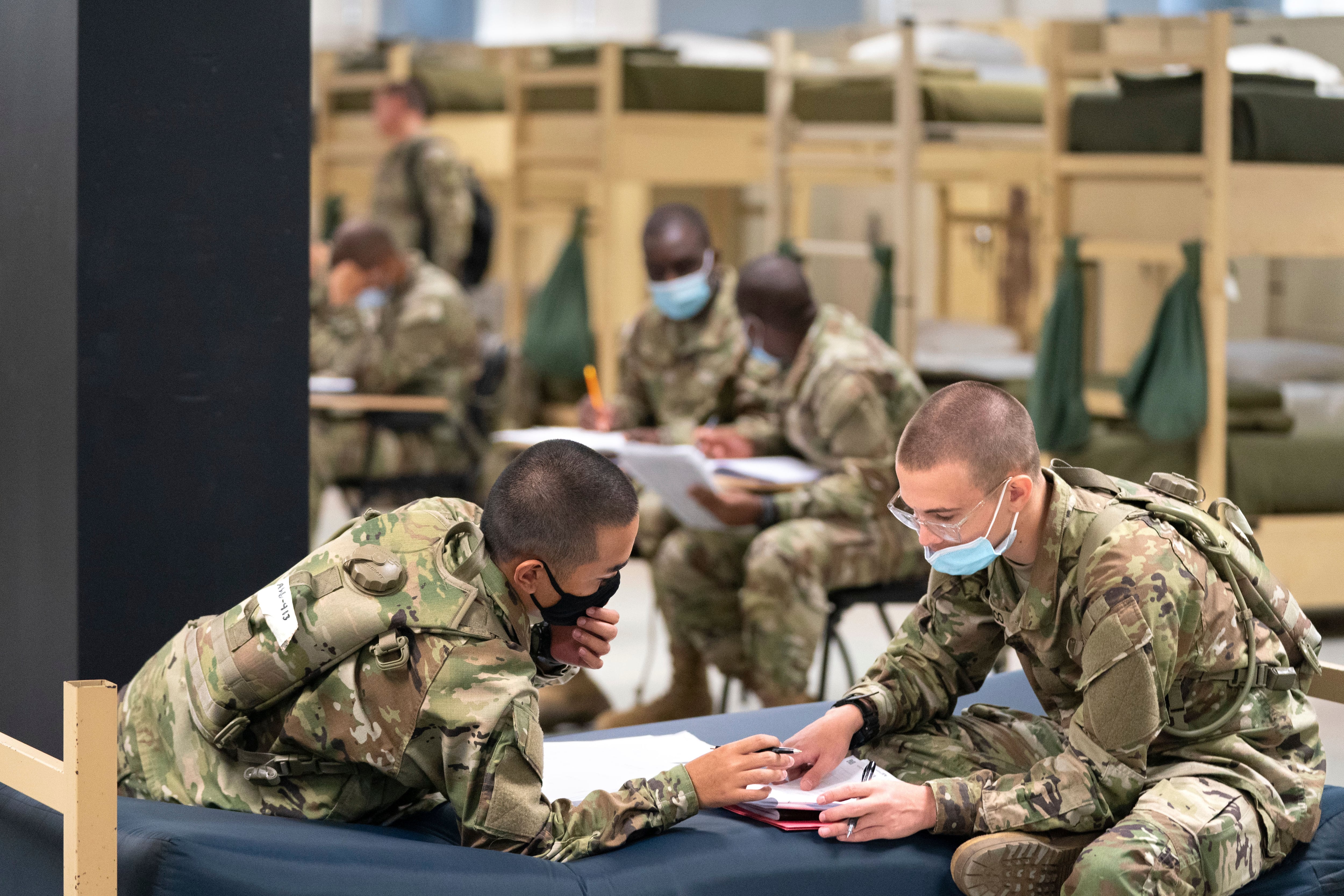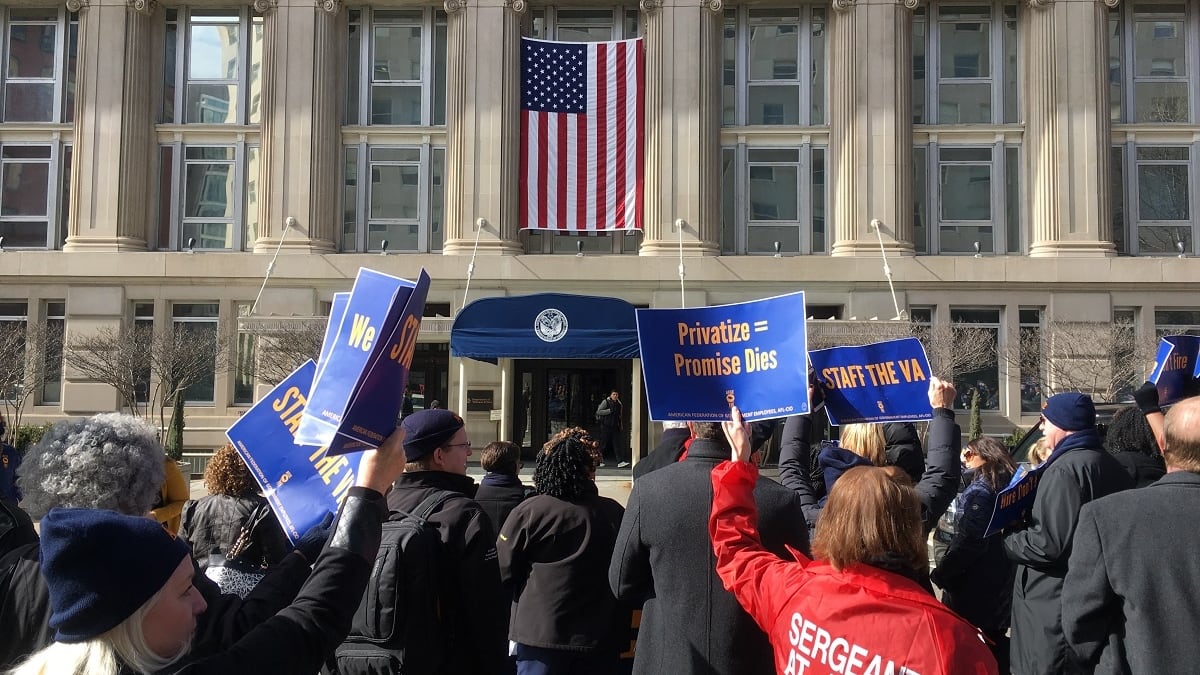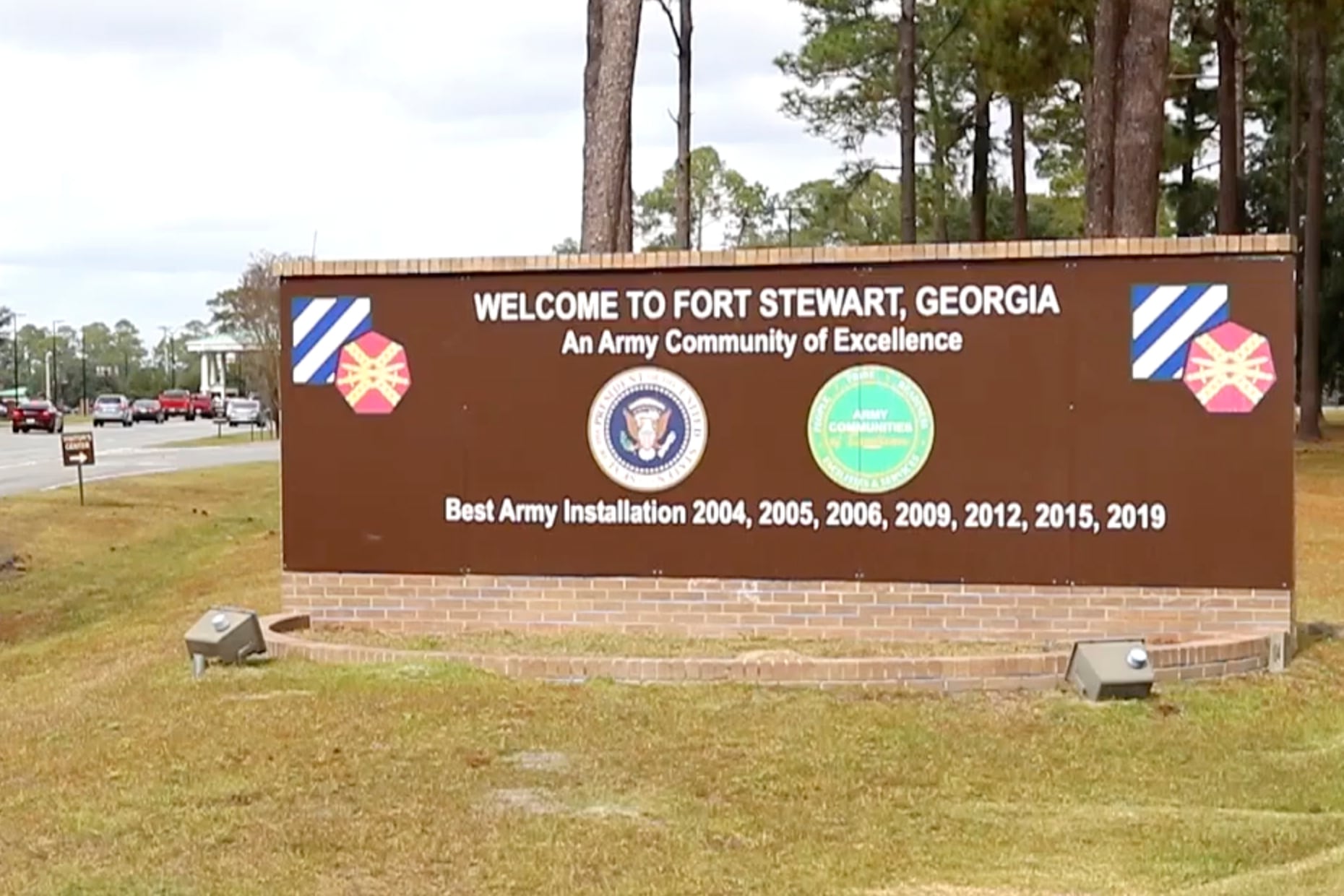A new approach to training brand new recruits in large-scale combat aims to prepare soldiers for future conflicts as the Army readies the force for a potential slugfest against foes like the Russian or Chinese militaries.
In March, the service launched “Forge 2.5,” another update to “The Forge,” which began as a concept in 2016 with a 96-hour field exercise for week-seven trainees. The Forge has been in place since 2018 as a regular feature of basic training.
The event closely mirrors “The Crucible,” which the Marine Corps instituted in its recruit training in the 1990s. The field endurance test puts recruits in a patrol base, and they run through a variety of combat and logistical scenarios over the course of the four-day stretch.
RELATED

Forge 2.5 ratchets up recruit learning by running large-scale combat operation scenarios, all while involving drill sergeants and company command teams as leaders within the trainee teams.
This structure gives young soldiers firsthand field experience while keeping drill sergeants sharp on basic soldiering and leadership skills, said Gen. Gary Brito, head of the Army’s Training and Doctrine Command.
“What this is meant to do — part one is now immersing soldiers with threat actors from the moment they arrive in the reception company,” Brito said.
Part two of Forge 2.5, which rolled out this year, puts drill sergeants in squad leader positions.
As recently as three years ago, new soldiers conducted events in a fashion resembling a round robin, where individual soldiers would rotate between tasks. Now, every event is collective, and soldiers are always working with and leading small teams, Brito said.
In doing so, recruits are learning more than marching or basic rifle marksmanship, with many completing tasks they would not have encountered until pinning on an NCO rank.
From digital tool signature management to mission planning and order development, the drill sergeants are exposing the new soldiers to more complex considerations as they train, Brito said.
“The trainees are the ones actually executing casualty evaluation, gathering and sending reports, and the drill sergeants are leading them through all those different things they’ve learned so far in the basic combat training portion of [initial training],” said Capt. Julio Sanchez, commander of Company A, 31st Engineer Battalion out of Fort Leonard Wood, Missouri.
Sanchez’s unit conducted a pilot version of the Forge 2.5 format this year at the home of basic training for most of the Army’s non-combat arms jobs.
And that, Brito said, is why Army leaders must be at the top of their game for when these new soldiers arrive.
“You all will be charged in leading cohesive teams,” Brito said. “Privates will be introduced to why we need to be cohesive and the importance of the battle buddy.”
Brito tied that soldier development back to how the Army is expecting more of lower level tactical leaders, who will have high-level assets such as satellite feeds, drone-based fire support and other tools that soldiers previously never needed to consider.
The new training structure has been implemented at Fort Moore, Georgia; Fort Jackson, South Carolina and Fort Leonard Wood, Missouri.
Beyond the Forge 2.5 implementation, another program recently surpassed a milestone. The Future Solder Prep course has seen 25,000 soldiers complete entry-level training and join Army units as of this year, Army Times previously reported.
The pre-basic training program began in 2022 to take prospective recruits who did not meet minimum physical or academic standards and give them up to 90 days to reach those standards with the help of Army training staff.
CORRECTION: This article has been corrected to include accurate references to geographic locations for Army installations and the type of training being adjusted.
Todd South has written about crime, courts, government and the military for multiple publications since 2004 and was named a 2014 Pulitzer finalist for a co-written project on witness intimidation. Todd is a Marine veteran of the Iraq War.





